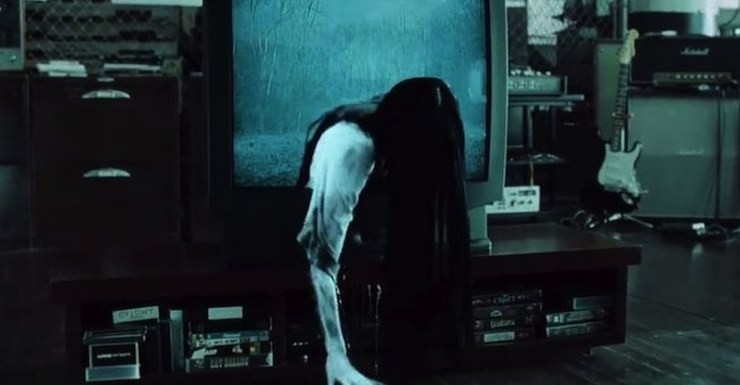I basically spent the 1990s in Japan, eight years in-country and the rest of the time traveling. I had the leisure to read as much as I chose, much of it pure frivolity like the humorous essays of Munenori Harada and classic comedy like Shank’s Mare. Just as in English, though, I always found myself wandering off into dark corners of the bookstore.
Here are five books of mystery and imagination that changed the way I thought of Japan.
Mystery: Ten to sen (Points and Lines)
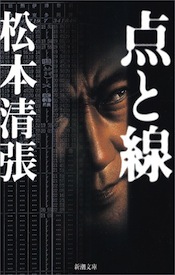 In the 1990s, I visited some of the locales from Seicho Matsumoto’s classic detective novel. I tried to trace the route from the old station to the beach, following in the last steps of the lovers found dead on the sand. Two detectives suspect the beach “love suicide” is a double murder, and they doggedly break a seemingly unbreakable alibi in the most boring way possible: train timetables and maps (points and lines).
In the 1990s, I visited some of the locales from Seicho Matsumoto’s classic detective novel. I tried to trace the route from the old station to the beach, following in the last steps of the lovers found dead on the sand. Two detectives suspect the beach “love suicide” is a double murder, and they doggedly break a seemingly unbreakable alibi in the most boring way possible: train timetables and maps (points and lines).
I almost didn’t include Ten to Sen in this list. It’s a difficult work in some ways, and it’s hard to find in English, but the difficulty and relative obscurity finally decided me in its favor: This book deserves to be known.
When I first read it, I thought the characters were flat and lifeless. I thought the plot machinations were somewhere between Agatha Christie at her worst and a Westinghouse instruction manual at its best. I read it again after a couple of years in Japan and found the characterization was deftly, brilliantly understated, that the plot unfolded in an almost mathematically beautiful progression, point to line to point to line until the final destination, and that the seemingly innocuous mystery tale was a condemnation of postwar corruption, villainy on a corporate and cultural scale.
Haiku aside, it’s probably the most Japanese thing I’ve ever read, and the locales, that old station and that old beach, play a prominent role in my work in progress, The Hungry Priest.
J-horror: Ringu (Ring)
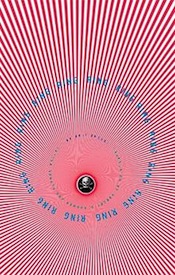 Ah, Ringu. Sadako climbing out of the television and doing her jerking jive across the floor was a pivotal moment in the revival of J-horror.
Ah, Ringu. Sadako climbing out of the television and doing her jerking jive across the floor was a pivotal moment in the revival of J-horror.
A moment that didn’t happen in Koji Suzuki’s 1991 novel. Ringu reads as a perversely straightforward medical thriller, totally at odds with plot elements from over-the-top crazyland: the cursed videotape is sort of a psychic bioweapon that delivers the Ring Virus, which causes myocardial infarction in those who don’t dub the tape and pass it on within seven days. The virus itself was a byproduct of a psychic girl’s torment. Oh, and she’s dead. At the bottom of a well.
Sadako’s powers are much less sweeping than in film versions, and in place of those supernatural pyrotechnics, Suzuki creates a sense of impending doom and darkness, the kind of inescapable claustrophobia that I tried to weave through my own work.
Existential Weirdness: Mikkai (Secret Rendezvous)
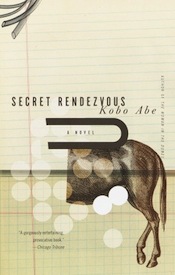 Kobo Abe’s 1977 novel of a man searching a hospital for his missing wife isn’t the strangest thing I’ve ever read, but it made its mark. I read it nearly 20 years ago, but I’ll never forget the doctor surgically transforming himself into a centaur, the nymphomaniac whose bones are slowly dissolving, the absurdities giving way to a terrible and inexorable internal logic as the searcher burrows deeper and deeper into the bowels of the hospital. Abe was a genius; I could tell that even with my weak Japanese skills. Luckily for all of us, Juliet Winters Carpenter’s English translation of Secret Rendezvous does Abe justice; it won the 1980 Japan-U.S. Friendship Commission Prize for the Translation of Japanese Literature.
Kobo Abe’s 1977 novel of a man searching a hospital for his missing wife isn’t the strangest thing I’ve ever read, but it made its mark. I read it nearly 20 years ago, but I’ll never forget the doctor surgically transforming himself into a centaur, the nymphomaniac whose bones are slowly dissolving, the absurdities giving way to a terrible and inexorable internal logic as the searcher burrows deeper and deeper into the bowels of the hospital. Abe was a genius; I could tell that even with my weak Japanese skills. Luckily for all of us, Juliet Winters Carpenter’s English translation of Secret Rendezvous does Abe justice; it won the 1980 Japan-U.S. Friendship Commission Prize for the Translation of Japanese Literature.
Manga: Uzumaki (Spiral)
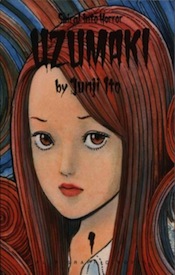 You hate flying robots and boys with spiky hair and girls with big, sparkly eyes? That’s okay. Uzumaki (Spiral) is a grown-up manga so delightfully weird you won’t be able to resist its Lovecraftian pull.
You hate flying robots and boys with spiky hair and girls with big, sparkly eyes? That’s okay. Uzumaki (Spiral) is a grown-up manga so delightfully weird you won’t be able to resist its Lovecraftian pull.
Writer/illustrator Junji Ito apparently got the idea for subverting the spiral from other manga, in which rosy cheeks and and enchanted eyes are often depicted with spirals. That cheery shape is the outward sign of inner decay in the sleepy little town of Kurouzu-cho, where spirals are slowly taking over people’s lives, minds and hearts. Bit by bit, the curse of the spiral destroys the town until only a dilapidated string of rowhouses is left. The surviving residents move in, expanding the rowhouses on either end until a familiar pattern begins to emerge…
Uzumaki is an awesome confluence of Gothic, Cosmic and classic manga horror, and a great introduction to seinen manga. TIP: If you’re new to this medium, don’t search for “adult manga” unless you want…adult. Use the search term seinen (grown-up) to distinguish from seijin-muke (erotic-themed) or hentai (downright perverse) manga. Trust me on this.
Classic Horror: Ugetsu Monogatari (Tales of Moonlight and Rain)
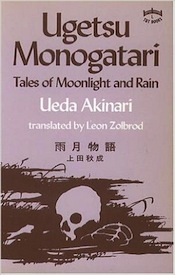 Ugetsu Monogatari can be a deep dive into Japanese culture, if that’s what you want. Or it could just be a quiet evening with a collection of satisfyingly creepy supernatural stories.
Ugetsu Monogatari can be a deep dive into Japanese culture, if that’s what you want. Or it could just be a quiet evening with a collection of satisfyingly creepy supernatural stories.
Akinari Ueda’s 1776 collection holds an important place in Edo-era literature as a bridge between Chinese scholarship and popular entertainment, and it has directly influenced writers from Edogawa Rampo (“The Stalker in the Attic,” “The Human Chair”) to Lafcadio Hearn (Kwaidan) to Ryunosuke Akutagawa (Kappa, “Rashomon”). Because Ugetsu Monogatari is a gloss on Ming Dynasty Chinese classical tales with reliance on wordplay and character compounds common to Chinese and Japanese, you could learn a lot just from the notes, depending on which translation you choose, or from a deeper dive into the attendant scholarship.
Ugetsu Monogatari stands on its own in terms of pure entertainment. The stories unfold in a leisurely, controlled manner that speaks of a different time and place, and the underlying messages of otherworldly justice and divine righteousness are a pleasant antidote to cynical, soulless, splatter-punk-driven apocalyptic horror.
My personal favorite among these stories is “Aozukin” or “The Blue Hood.” A single sentence of that story was so horrifying that it rattled around in my head for almost three decades. Like the grain of sand that became the pearl, that idea has become The Hungry Priest, the sequel to The Drowning God.










